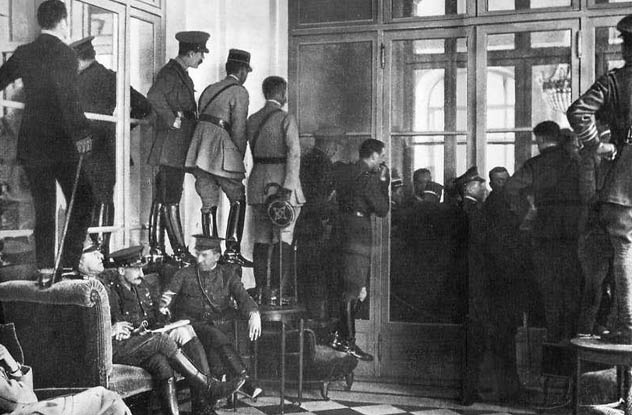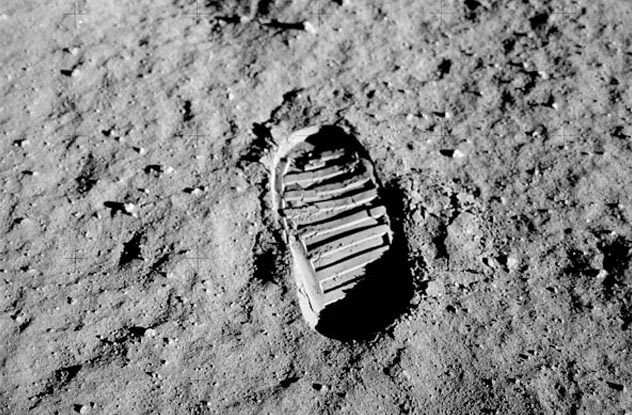5 most important photographs in history.
5The Burning Monk
1963

Photo credit: Malcolm Browne/AP
This shocking photograph depicts Quang Duc, a monk who set himself on fire at a busy Saigon road intersection in 1963. He died protesting the persecution of Buddhists by the South Vietnamese government. The regime had made life very difficult for Buddhists, banning them from flying their traditional flag or practicing their beliefs and spiritual exercises. Thus the Buddhists decided that a message had to be sent.
Quang Duc emerged from a car just outside of the Cambodian Embassy, accompanied by two other monks. He calmly sat down in a traditional meditative position while another monk soaked him in gasoline from head to toe. Quang Duc didn’t even flinch as the other monk struck a match and set him ablaze. Passersby were mostly stunned, but some did manage to stop and pray as the monk burned alive.
His protest didn’t go unnoticed. The image made headlines all over the globe within hours. In the words of President John F. Kennedy: “No news picture in history has generated so much emotion around the world as that one.”
4Glimpsing The Versailles Signing
1919

Photo credit: Henry Guttmann/Getty Images
The Treaty of Versailles was one of the peace treaties that ended World War I, and though peace treaties in general are all well and good, this particular one was a train wreck. Bitterness and revenge, rather than logic, defined the terms. It put full responsibility of the war on Germany, making the country pay insanely high reparations (which it wouldn’t finish paying off until 2010). This ruined Germany’s economy, made the nation all too eager to regain strength at any price, and ultimately set the stage for World War II. So much for keeping the peace.
The treaty’s flaws make it all the more amazing to see how eagerly people initially received it—particularly to see top military officials precariously perched on furniture to witness the historic signing.
3Tenzing Norgay On Everest’s Summit
1953

Photo credit: Edmund Hillary/Royal Geographic Society
We humans are always looking for the next thing to conquer, be it armies, entire empires, or even Mother Nature herself. This desire to learn more, try harder, and constantly outdo ourselves has resulted in incredible feats and accomplishments. The tale of the first people to ever climb the highest peak on the planet is no different—it was the result of sheer determination and willpower.
Shown above is Tenzing Norgay. On May 29, 1953, he and his New Zealander companion Edmund Hillary became the first individuals known to reach the summit of Everest. They had managed to conquer the world’s highest mountain a mere three days before Queen Elizabeth II’s coronation, and the news didn’t reach the world until the morning of the coronation itself.
The duo spent only about a quarter of an hour on the summit. Hillary then took the famous photo of Tenzing posing with his ice axe, but when Tenzing asked to return the favor, the New Zealander refused. They took some additional photographs as proof, and with that, the duo slowly began the dangerous descent back to civilization.
2Hubble Ultra Deep Field
2003

Photo credit: NASA/ESA
In 2003, the Hubble telescope pointed its lens at a small empty spot in the sky, creating the Hubble Ultra Deep Field image and giving us our farthest look into deep space. Before scientists pointed the Hubble at that patch of space, they honestly expected very little to be found out there. After they developed the slides, they realized that not only were they wrong, but they ended up finding an incredible amount of previously undiscovered phenomena. The knowledge gathered from this picture made it possible to observe the faintest galaxies in the universe, which would keep scientists busy for years. These galaxies were so distant and far away from us that we didn’t even know that they had existed before.
This photo may have even helped humanity to see itself as one, beyond national boundaries, races, and ethnicities. It really does make us realize how small and fragile we truly are. Others view this image as the complete opposite. Here’s the universe, in all its grandeur, wonder, and unimaginable scope, and amid all of its vast reach sit simple humans.
As Douglas Adams put it, “Space is big. You just won’t believe how vastly, hugely, mind-bogglingly big it is. I mean, you may think it’s a long way down the road to the chemist’s, but that’s just peanuts to space.”
1Footprint On The Moon
1969

Photo credit: Buzz Aldrin/NASA
On July 20, 1969, mankind left its footprint for the first time on a body that was not the Earth. Astronaut Neil Armstrong made history—he was the first man to ever set foot on the lunar surface, a feat which would have been laughed at a mere decades prior. The historical event was broadcast to a worldwide television audience, with Armstrong muttering the famous words, “That’s one small step for [a] man, one giant leap for mankind.”
Armstrong and fellow astronaut Buzz Aldrin spent the next couple of hours collecting samples, while the third member of the team, Michael Collins, remained in the command module. Apollo 11 then came back safely to Earth on July 24, 1969. The success of the mission meant that the US had won the Space Race and had fulfilled the promise of JFK, who in 1961 stated that the US would put a man on the moon by the decade’s end.
There’s no wind on the Moon, so no matter what happens to humans on this planet, this footprint will be up there for millions of years.
Source: Leonius
Please do not forget to vote for me, your favorite lady photographer in the NewBies Wedding photographer category, Ibadan wedding award.
*@phoye_photography* is in Category 11.
Your single vote goes a long way and trust me, it’s just 2 minutes or even less of your time it would take. So we can actually get this done without stress.
Please vote via this link:
http://bit.ly/IbadanWeddingAwards
voting ends in a week time. Thank you fam ❤


Comments
Post a Comment